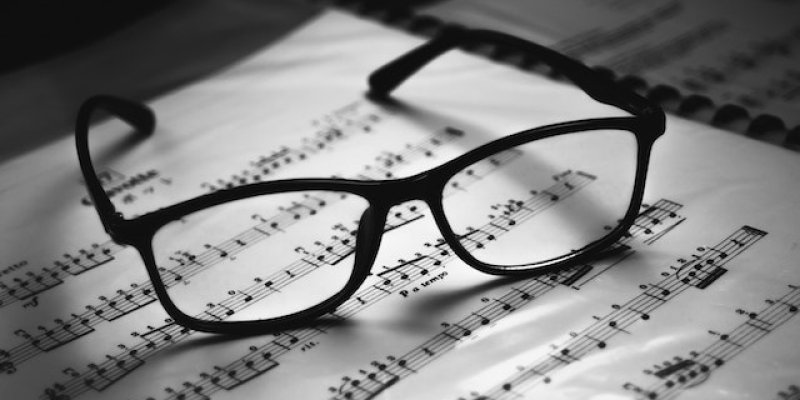
Understanding the theory of music is vital for so many different reasons if you are a serious musician. Even just learning the basics can take you pretty far in the music world.
For one, it provides a universal language that musicians can use to communicate ideas effectively. Whether collaborating in a band, orchestra, or any other musical ensemble, having a solid understanding of music theory ensures that everyone is on the same page.
Musicians can discuss chords, scales, progressions, and other musical elements using standard terminology, enhancing efficient communication and collaboration.
While creativity is huge in music, a foundation in music theory also provides a framework for musicians to explore their creative ideas.
Also, music theory enhances the listener's appreciation of music. When you understand the theory behind a piece, you can recognize patterns, anticipate chord changes, and appreciate the nuances in the melody and harmony.
Need a quick intro into what the world of theory can bring you in your music career? Let's go over some of the very basics that I believe all artists should know about.
Related Post: 8 Fun And Effective Ways To Learn Music Theory
At the heart of music theory are notes and scales. A note is a sound with a specific pitch and duration. The musical alphabet consists of seven natural notes ( C, D, E, F, G, A, B), and each note can be further altered with sharps (#) or flats (♭).
Understanding the arrangement of these notes forms scales, which are sequences of notes organized by pitch. Major and minor scales are the most fundamental, serving as the foundation for most Western music.
Mastering these scales provides the basis for coming up with melodies and harmonies that sound great and are emotionally resonant.
Chords are groups of notes played together to create harmony. They are the building blocks of songs and provide the framework for melody and rhythm.
Common chord types include major, minor, diminished, and augmented chords. Learning how chords are constructed and how they relate to each other within a key is a must for musicians!
Understanding chord progressions, the sequence of chords in a piece of music, is also essential for crafting engaging musical narratives.
Related Post: Best Songs To Harmonize To
Ear training is the process of developing the ability to identify and reproduce musical elements by ear. Intervals, the distance between two notes, form the basis of melodies, chords, and harmonies.
Training your ear to recognize intervals helps in improvisation, composition, and playing by ear. For instance, recognizing a perfect fifth interval by ear enables a musician to play harmonies accurately.
Musicians with a keen sense of intervals can easily replicate melodies, harmonies, and chord progressions, enabling them to express themselves more freely and creatively in their music.
Rhythm is the arrangement of sounds and silences in time. It gives music its groove and energy. Notes and rests represent different durations of sound and silence. Common notes include whole notes, half notes, quarter notes, eighth notes, and sixteenth notes.
Each note is half the duration of the note preceding it. For instance, a half note lasts twice as long as a quarter note.
Time signatures, represented as fractions like 4/4 or 3/4, dictate the number of beats in a measure and the type of note that receives one beat.
Musicians must grasp the concept of rhythm and time signatures to play in sync with other musicians and create well-structured compositions.
The most common time signature is 4/4, indicating four beats per measure, with the quarter note receiving one beat. In this context, a basic rhythm could be four quarter notes: 1, 2, 3, 4.
This knowledge forms the basis for rhythms and syncopated patterns that add depth and excitement to music.
Related Post: What Is A Bar In Rap Music? + How It Differs From A Measure
Key signatures indicate the sharps or flats used in a particular key. Understanding key signatures is essential for transposing music, a skill that allows musicians to play a piece in a different key without changing the overall pattern of the notes.
In C Major, there are no sharps or flats, while G Major has one sharp (F♯). D Major has two sharps (F♯, C♯), and F Major has one flat (B♭).
For natural minor keys, A Minor has no sharps or flats, while E Minor has one sharp (F♯) and D Minor has one flat (B♭).
These signatures guide musicians on which notes to play, forming the backbone of musical compositions. Mastering key signatures allows musicians to be versatile and adaptable, opening up a wide range of musical possibilities.
Understanding dynamics and articulation is vital for musicians aiming to convey emotion and intensity in their performances.
Dynamics refer to the variation in volume, from pianissimo (very soft) to fortissimo (very loud). Musicians use dynamics to create contrasts and emphasize specific parts of a composition.
Articulation, on the other hand, defines how individual notes are played, including techniques like staccato (short and detached) and legato (smooth and connected).
Mastering dynamics and articulation allows musicians to breathe life into their performances, adding nuance and expression to their playing.
Related Post: Music Dynamics - How They Shape A Performance

As a session singer, writer, and producer that has worked with over 300 clients to provide high-quality jingles, singles, and features, Yona spends her time creating and marketing new music and helpful resources for creators. Check out Yona’s latest releases on her Spotify, her Youtube and share if you like it!
If you are in need of singer, songwriter or song producer services, see what Yona Marie can offer you on her services page.